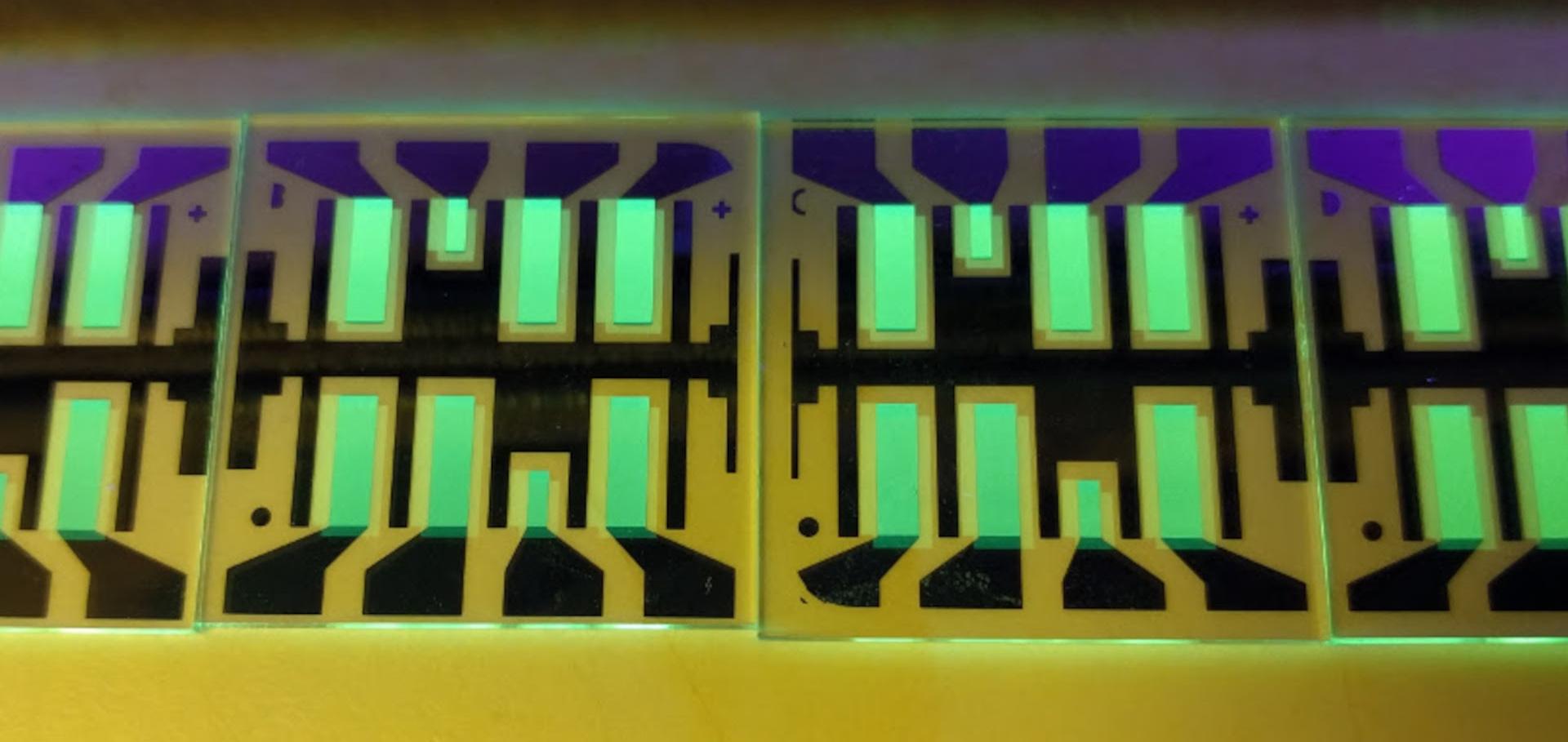Molecular doping for control of gate bias stress in organic thin film transistors
Applied Physics Letters 104:1 (2014)
Abstract:
The key active devices of future organic electronic circuits are organic thin film transistors (OTFTs). Reliability of OTFTs remains one of the most challenging obstacles to be overcome for broad commercial applications. In particular, bias stress was identified as the key instability under operation for numerous OTFT devices and interfaces. Despite a multitude of experimental observations, a comprehensive mechanism describing this behavior is still missing. Furthermore, controlled methods to overcome these instabilities are so far lacking. Here, we present the approach to control and significantly alleviate the bias stress effect by using molecular doping at low concentrations. For pentacene and silicon oxide as gate oxide, we are able to reduce the time constant of degradation by three orders of magnitude. The effect of molecular doping on the bias stress behavior is explained in terms of the shift of Fermi Level and, thus, exponentially reduced proton generation at the pentacene/oxide interface. © 2014 AIP Publishing LLC.Electroabsorption studies of organic p-i-n solar cells: Evaluating the built-in voltage
MRS Proceedings 1639:1 (2014)
Abstract:
Copyright © Materials Research Society 2014. We investigate the built-in voltage in organic bulk heterojunction solar cells using electroabsorption spectroscopy based on the Stark effect, i.e. the variation of the absorption energies of a material caused by an electric field. Due to spectral contributions of permanent dipoles, a novel approach for evaluating the EA spectra is required. We use a fitting routine analyzing a broad spectral range instead of using only a single wavelength. A reliable quantitative determination of the built-in voltage is achieved.Electroabsorption studies of organic p-i-n solar cells: Increase of the built-in voltage by higher doping concentration in the hole transport layer
Organic Electronics 15:2 (2014) 563-568
Abstract:
The built-in voltage in solar cells has a significant influence on the extraction of photogenerated charge carriers. For small molecule organic solar cells based on the p-i-n structure, we investigate the dependence of the built-in voltage on the work function of both the hole transport layer and the electrode material. The model system investigated here consists of a planar heterojunction with N,N,N′,N′-tetrakis(4-methoxyphenyl)-benzidine (MeO-TPD) as donor and Buckminster Fullerene (C60) as acceptor material. A higher concentration of the dopant C60F36 in the hole transport layer induces a shift of the work function towards the transport level. The resulting increase of the built-in voltage is studied using electroabsorption spectroscopy, measuring the change in absorption (Stark effect) caused by an externally applied electric field. An evaluation of these electroabsorption spectra as a function of the applied DC voltage enables the direct measurement of the built-in voltage. It is also shown that an increased built-in voltage does lead to a larger short-circuit current as well as a larger fill factor. © 2013 Elsevier B.V. All rights reserved.Highly efficient p-dopants in amorphous hosts
Organic Electronics 15:2 (2014) 365-371
Abstract:
We study the influence of the molecular energy levels on doped organic layers, using four different combinations of two amorphous hosts (MeO-TPD and BF-DPB) and two efficient p-dopants (F6-TCNNQ and C 60F36). Conductivity and Seebeck studies are performed in situ, varying the doping concentration over more than two orders of magnitude. Whereas trends of doping are in agreement with the hosts' energy levels, trends deviate from the expectation based on the dopants' energy levels. A lower limit for the mobility can be derived from conductivity data, which for samples of F6-TCNNQ increases with doping, even exceeding the measured OFET-mobility of intrinsic MeO-TPD. © 2013 Elsevier B.V. All rights reserved.Electroabsorption studies of organic p-i-n solar cells: evaluating the built-in voltage
MRS Advances Springer Nature 1639:1 (2014) 701


